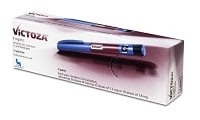 Trulicity was late to the next-generation diabetes treatment party, so Eli Lilly ($LLY) knew its launch would have to be different.
Trulicity was late to the next-generation diabetes treatment party, so Eli Lilly ($LLY) knew its launch would have to be different.
The traditional U.S. strategy--sending salespeople straight to physicians' offices after approval, while launching a DTC campaign a few months after that--needed a rethink for the now-fifth GLP-1 treatment for Type 2 diabetes.
So instead of following the same old route, Lilly went to payers first. Payer access and reimbursement would be important in getting good uptake of Trulicity, said Keith Johns, senior director of marketing for Trulicity, so when the drug won FDA approval in September 2014, Lilly reps focused first on payers, specifically those in commercial managed care. Lilly is also now participating in bidding for Medicare Part D for 2016.
The strategy worked, Lilly says. To date, more than two-thirds of people on commercial managed care plans are approved for Trulicity, Johns said. While he declined to speculate on Trulicity's Part D chances, he said he feels "confident" about its access status come January.
Next, starting last November, Lilly went to the country's 5,000 endocrinologists in its first wave to healthcare professionals. In February, Lilly began training Trulicity sales staff to go out to talk to primary care physicians.
Finally, now, they're ready for a consumer launch. Print and digital ads began appearing in September, and the DTC TV spot launches today.
"There is a significant opportunity in patients who are on oral agents and need to move to an injectable therapy to gain better control, but are hesitant," Johns said.
Liz Krueger, brand director for consumer marketing of Trulicity, said the DTC campaign takes into account that insight, as well as others learned from people with Type 2 diabetes. For instance, patients need to know Trulicity isn't an insulin, so the TV ad uses the tagline "Click to activate your within" to explain how the noninsulin stimulates the person's own natural insulin. Injection needles are another consumer pain point, and the "click" in the tagline refers to the ease of the unseen needle in Trulicity's pen device.
The campaign also highlights Trulicity's effect on A1C numbers and notes that some patients shed weight, Krueger said. And of course the campaign spotlights Trulicity's once-a-week dosing and long-acting effects.
 Currently, Novo Nordisk's ($NVO) daily Victoza leads the GLP-1 category, with annual sales around $2 billion. Others in the category are AstraZeneca's ($AZN) Byetta and Bydureon, and GlaxoSmithKline's ($GSK) Tanzeum. Byetta is injected twice daily, while Bydureon and Tanzeum are once a week.
Currently, Novo Nordisk's ($NVO) daily Victoza leads the GLP-1 category, with annual sales around $2 billion. Others in the category are AstraZeneca's ($AZN) Byetta and Bydureon, and GlaxoSmithKline's ($GSK) Tanzeum. Byetta is injected twice daily, while Bydureon and Tanzeum are once a week.
And more are on the way. Sanofi ($SNY) is getting ready to enter the market with daily Lyxumia, set for FDA filing this quarter, and Novo is readying another horse for the race with once-weekly semaglutide in Phase III and an oral version in Phase II.
The market for incretin-based drugs, which also includes DPP-4 meds like Merck & Co.'s ($MRK) Januvia, was $12.7 billion last year and is expected to rise to $22.8 billion by 2019, according to BCC Research. That's because of the growing number of people who have Type 2 diabetes. Today more than 29 million people in the U.S. have diabetes, but 95% of them have Type 2, according to the Centers for Disease Control and Prevention. Another 86 million, or 1 in 3, Americans are estimated to have prediabetes, the CDC reports, and if no preventative measures are taken, such as losing weight and getting more exercise, an estimated 15% to 30% will develop Type 2 diabetes within 5 years.
Special Report: Top 10 best-selling diabetes drugs of 2013